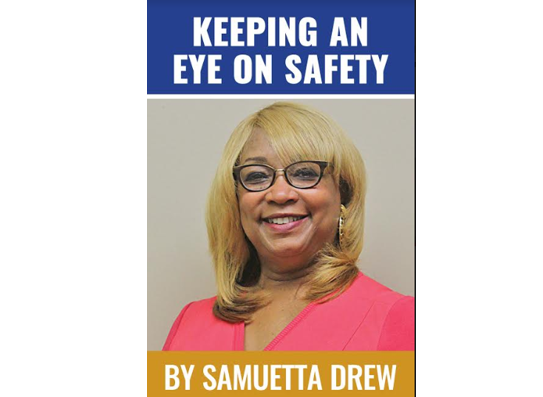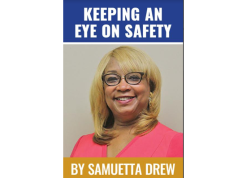By Samuetta Hill Drew
As stated in last week’s article, with scorching temperatures during the summertime comes various water activities people engage in to stay cool while having fun. One of the most popular water activities is swimming. Whether it’s in a private, backyard or public pool, people of all ages love to take a refreshing summertime dip, swim or dive. With this popular water activity comes some safety precautions adults need to be aware of and practice on a regular basis, especially when swimming with children. This is part one of a two-part segment addressing swimming safety and children.
It’s unfortunate the possibility of pool deaths and serious injuries are a real threat. The National Safety Council (NSC) reports that in 2016 more than 3,700 people drowned in the U.S. Sadly, drowning deaths are very prevalent among babies and toddlers. The NSC further states drowning was the leading cause of preventable deaths for children 1-4-years old in 2016. Between Memorial Day and Labor Day in 2018, a minimum of 148 children under the age of 15 were drowning fatalities in the U.S. and twice as many were hospitalized with serious injuries.
- It is important that you don’t allow children to swim without proper adult supervision. The adult should be in close proximity and be able to watch, as well as reach, the child(ren) when they are participating in swimming activities.
• Babies or toddlers that are not potty-trained should wear swim diapers for safety and sanitary reasons. A regular diaper absorbs water quickly, becoming heavy and an anchor for your child. If the diaper falls off, it can possibly contaminate the pool with feces. Chlorine neutralizes urine not feces. A swim diaper keeps any feces inside the diaper. Note cloth diapers absorb water also making it very heavy and a safety hazard as well. You should check and change your child as needed to ensure the water remains sterile for everyone.
• Kiddie pools require safety measures just like its counterparts – permanent in ground and above ground pools. It has been reported that portable pools account for 10 percent of drowning fatalities of children under 15. Children need to be watched no matter what type of pool they’re swimming or playing in.
• Caution children about playing roughly and recklessly in the pool. They should never push anyone into a pool, nor should they run around the pool area. The pool area will be slippery and could possibly result in a tragic fall.
• No electrical items should be used around the pool area. Have a first-aid kit handy, just in case.
It’s very important to practice the proper safeguards when children are swimming, but there is no substitute for adults Keeping an Eye on Safety.





